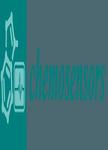版权所有:内蒙古大学图书馆 技术提供:维普资讯• 智图
内蒙古自治区呼和浩特市赛罕区大学西街235号 邮编: 010021

作者机构:Voronezh State Univ Engn Technol VSUET Dept Phys & Analyt Chem Revolutsii Ave 19 Voronezh 394036 Russia Univ Tor Vergata Dept Chem Sci & Technol Via Ric Sci 1 I-00133 Rome Italy
出 版 物:《CHEMOSENSORS》 (Chemosensors)
年 卷 期:2021年第9卷第6期
页 面:116页
核心收录:
基 金:Russian Science Foundation [18-76-10015] Russian Science Foundation [18-76-10015] Funding Source: Russian Science Foundation
主 题:gas sensor array principal component analysis volatile metabolites nasal swabs pattern recognition
摘 要:This paper discusses the application of two approaches (direct and inverse) to the identification of volatile substances by means of a gas sensor array in a headspace over nasal mucus swab samples taken from calves with differing degrees of respiratory damage. We propose a unique method to visualize sensor array data for quality analysis, based on the spectra of cross mass sensitivity parameters. The traditional method, which requires an initial sensor array trained on the vapors of the individual substances (database accumulation)-with their further identification in the analyzed bio-samples through the comparison of the analysis results to the database-has shown unsatisfactory performance. The proposed inverse approach is more informative for the pattern recognition of volatile substances in the headspace of mucus samples. The projection of the calculated parameters of the sensor array for individual substances in the principal component space, acquired while processing the sensor array output from nasal swab samples, has allowed us to divide animals into groups according to the clinical diagnosis of their lung condition (healthy respiratory system, bronchitis, or bronchopneumonia). The substances detected in the gas phase of the nasal swab samples (cyclohexanone, butanone-2,4-methyl-2-pentanone) were correlated with the clinical state of the animals, and were consistent with the reference data on disease markers in exhaled air established for destructive organism processes.